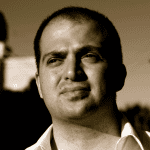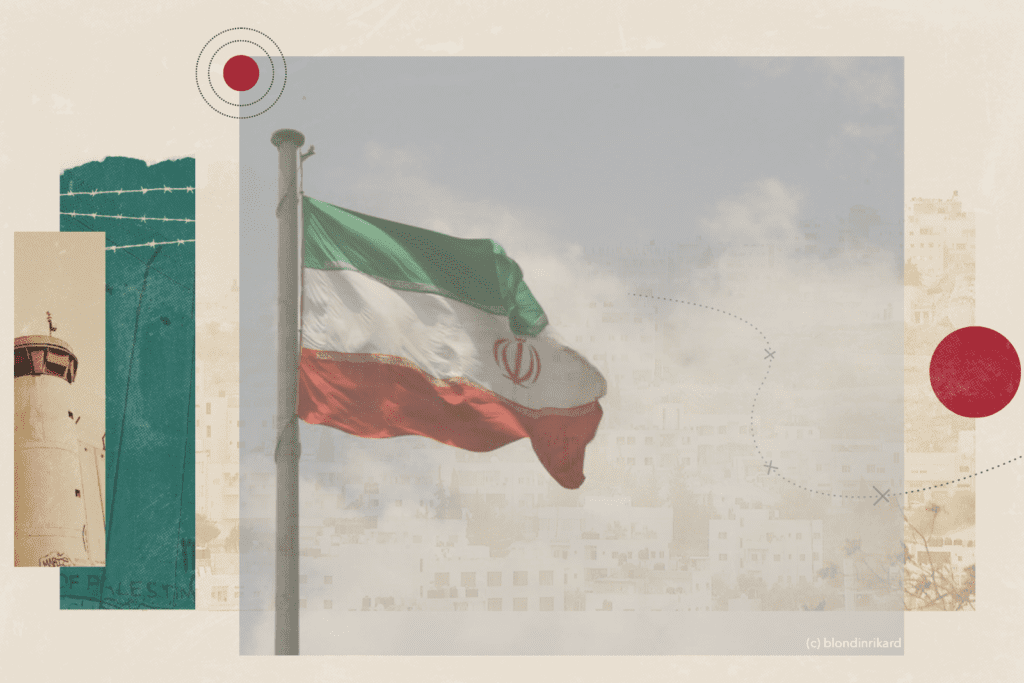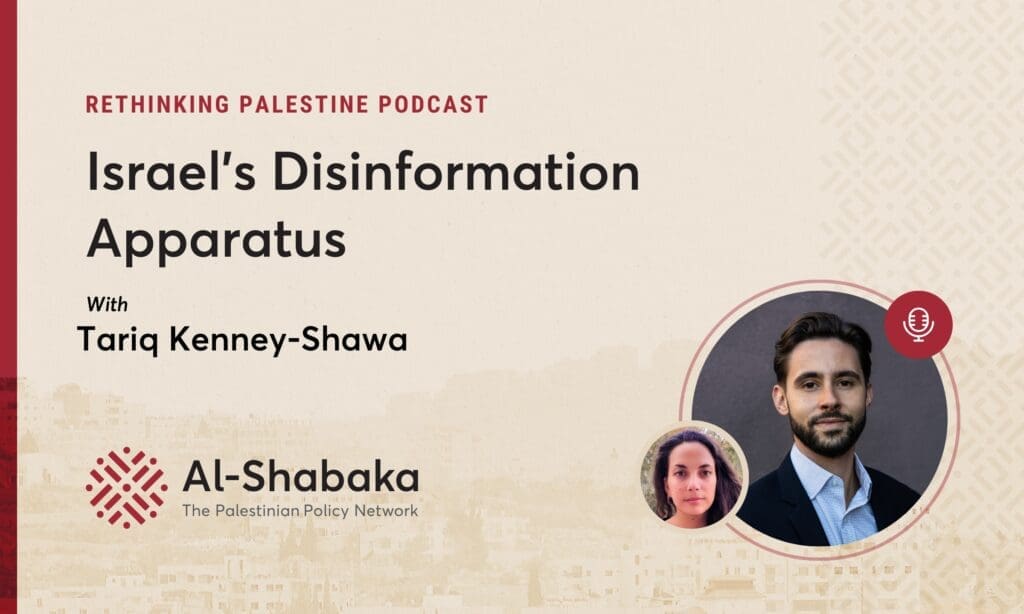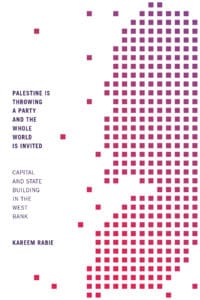- Topics
-
Topics
See our analysis on civil society and how it shapes culture, politics, and policies
Read our insights on the shifting political landscape and what it means for Palestine
Learn more about the policies and practices shaping the Palestinian economy
Strengthen your understanding of the unique conditions for Palestinian refugees across the Middle East
-
- Analysis
-
Analysis
In-depth analysis on existing or potential policies that impact possibilities for Palestinian liberation.
Insights and perspectives on social, political, and economic questions related to Palestine and Palestinians globally.
Concise analysis into a specific policy, its background and implications.
Commentary that brings together insights from multiple analysts.
Compilations of past Al-Shabaka works surrounding a specific theme.
Longer-form, ad hoc projects that seek to confront research questions outside the scope of our regular analysis.
A policy-driven research initiative by Al-Shabaka: The Palestinian Policy Network.
Our monthly webinar series that brings together Palestinian experts.
Featured
While it remains unclear how and when Israel will respond to Iran’s operation, geopolitics have undoubtedly already shifted. In this roundtable, Al-Shabaka analysts Fadi Quran, Fathi Nimer, Tariq Kenney-Shawa, and Yara Hawari offer insights on the regional impact of Iran’s recent maneuver and situate the ongoing genocide in Gaza within this broader context.


 +Mainstream media coverage of the genocide in Gaza throughout the West has highlighted not only deep biases in favor of the Israeli regime, but also the ease in which Palestinians are dehumanized. In this commentary, Yara Hawari details Israel’s strategy to strip Palestinians of their humanity in the public realm, as well as the role of Western media in advancing Israel’s aims. She reveals consistent patterns of journalistic malpractice since October 7, 2023, and concludes that the Western outlets are inescapably complicit in the Israeli regime’s genocide against the Palestinian people of Gaza.
+Mainstream media coverage of the genocide in Gaza throughout the West has highlighted not only deep biases in favor of the Israeli regime, but also the ease in which Palestinians are dehumanized. In this commentary, Yara Hawari details Israel’s strategy to strip Palestinians of their humanity in the public realm, as well as the role of Western media in advancing Israel’s aims. She reveals consistent patterns of journalistic malpractice since October 7, 2023, and concludes that the Western outlets are inescapably complicit in the Israeli regime’s genocide against the Palestinian people of Gaza. Yara Hawari· Apr 3, 2024Tariq Kenney-Shawa, Al-Shabaka’s US policy fellow, joins host Yara Hawari to discuss Israel’s information warfare tactics, used to influence public perception of its ongoing genocide in Gaza.
Yara Hawari· Apr 3, 2024Tariq Kenney-Shawa, Al-Shabaka’s US policy fellow, joins host Yara Hawari to discuss Israel’s information warfare tactics, used to influence public perception of its ongoing genocide in Gaza.
-
- Resources
- Media & Outreach
- The Network





Palestinian State-Building through Privatized City Planning
In his new book, Palestine is Throwing a Party and the Whole World is Invited, Al-Shabaka policy analyst and Assistant Professor of Anthropology at the University of Illinois, Chicago, 24449, examines how Palestinian governance shifted toward neoliberal globalization in the post-Fayyad years. Rabie traces how private companies and investors, international donors, and the Palestinian Authority (PA) in the West Bank promoted large-scale, private real estate development as a way to pursue policies of economic growth and state-scale stability. He uses the case of the West Bank Rawabi housing complex, founded by Bashar Masri, as a site to uncover these political and economic changes.
Rabie argues that private development and neoliberalization within the context of military occupation has unintended consequences. In other words, a robust private-sector economy does not promote sovereignty or an independent Palestinian state. Instead, private development reorients the public sector and entrenches Palestine’s subordination and subsumption to Israel.
As Rabie explains in the conclusion to his book:
Within this system, Rawabi is not to be understood as an outside imposition, but as a political and economic project by Palestinians and an indicator of one direction Palestine is moving. Palestinian state building is proceeding within the context of Israeli settler-colonial territorial ambitions and imperatives. It is a state that frames markets, private accumulation, and the distribution of international aid at one scale, but which is subject to Israel at all others.
Al-Shabaka recently sat down with Rabie to discuss his findings, and to inquire what can be inferred about Palestinian governance and state-building within this context.
In your book, you refer to Rawabi as “a private form of governance.” Can you expand on the role that non-state actors play in determining Palestinian national priorities and policies?
In the fifth chapter of my book, I argue that the private sector, the PA, and international NGOs have worked in concert through an explicitly stated national priority to develop affordable housing. They carried out studies that promoted the idea of a housing shortage and established it as a need the private sector would meet. It is a sector that, naturally, has its own motivations and imperatives. In the case of Rawabi, this private governance is a straightforward concept: it is a large, city-scale real estate project being undertaken by private developers — developers who will have practical and municipal control and authority through service provision, homeowners’ associations, and other means. Privatization in the West Bank is part of the stabilization of the West Bank within Israel, and at the expense of other parts of colonized Palestine Click To TweetPrivatization at this level reflects changing social, political, economic, and land relations throughout Palestine. I tried to go beyond the ways that much of our analysis, narrative, and historiography have been shaped by the occupation and its geographies, largely focusing on the binary between domination and resistance within it. I think stabilizing projects, including Rawabi and other land development endeavors, are happening in a subordinate and suspended West Bank. Place-specific projects that attempt to model economic and material promise, and forms of aspiration, may also entrench those geographies and relationships between the West Bank and Israel that work to disaggregate Palestinians elsewhere in historic Palestine – most recently and violently in Gaza and Jerusalem – from their land and ways of being as Palestinian. That is to say that privatization in the West Bank is part of the stabilization of the West Bank within Israel, and at the expense of other parts of colonized Palestine. Here’s how I put it in an earlier piece in the New Left Review:
The Ramallah that has emerged over the past twenty-five years or so is not an escape from the Occupation, but the outcome of its dynamic of uneven development and purposeful fragmentation […] As Ramallah grows, in specific directions, along narrowing paths, Palestinian life and possibility are diminished elsewhere.
On the one hand, it is true that the private sector is uniquely capable of shaping priorities in this power vacuum. On the other, it is a beneficiary of changes — in aid funding, in ideological direction, through legal precedent, and so on — that are logically coherent within capitalist political and development logics, and neoliberal practice.
You describe governance under the PA as a “continual process toward […] the duration of management.” Can you explain what you mean by this?
That language, which I borrow from Nasser Abourahme, describes some of the ways planning and public capacity to govern, and to do infrastructure and service provision, are being eroded. In my research, one of my own guiding questions has been whether the status quo is sustainable. It seems clear that there is much work engaged in making it so — Naftali Bennett said that nothing would fundamentally change upon his assumption of power. Given this ongoing reality, there is a tension in the PA around how to plan for a future post-occupation that exists mainly aspirationally. As a result, the PA expends significant energy on stabilization. I found government planning compelling because one of the things you would hear about Rawabi at the time I was conducting my research was that it is “the first planned town,” even, as one developer told me, “the first new city built since Herod!” As someone who studies and cares about cities, I was struck at first because its scale is unique in Palestine, and it led me to ask a series of questions: What is planning in Palestine? What can it consist of? What has it been? What changes does it require and enable? What relations are congealed in new places? Immediately post-Oslo, there was a serious and diligent practice whereby planners in the PA grappled with how to build a state, how to provide services, and how to plan for the long-term. Very quickly, however, this was foreclosed by the real material limits of what the PA could possibly accomplish under occupation and given its dependence on external aid. The PA does not have many opportunities to act in a truly sovereign fashion, so its remit becomes more about stabilizing and maintaining what they have.Yet the critique of the PA and neoliberal state rollback of public services is not so straightforward either. Often in my interviews outside of the main cities in the West Bank, I talked to people who were encouraged by former Prime Minister Fayyad’s tenure for the simple reason that his moves towards localization meant that they saw the presence of the PA, and saw it working directly for them through small-scale infrastructural projects. This state-in-formation is malleable, incoherent, and characterized by a stripped-down autonomy oriented towards the maintenance of present conditions. But it is also being rebuilt and produced through interventions and investments that blur distinctions between the PA, the private sector, the government, or the state.
I found government planning compelling because one of the things you would hear about Rawabi at the time I was conducting my research was that it is “the first planned town,” even, as one developer told me, “the first new city built since Herod!” As someone who studies and cares about cities, I was struck at first because its scale is unique in Palestine, and it led me to ask a series of questions: What is planning in Palestine? What can it consist of? What has it been? What changes does it require and enable? What relations are congealed in new places? Immediately post-Oslo, there was a serious and diligent practice whereby planners in the PA grappled with how to build a state, how to provide services, and how to plan for the long-term. Very quickly, however, this was foreclosed by the real material limits of what the PA could possibly accomplish under occupation and given its dependence on external aid. The PA does not have many opportunities to act in a truly sovereign fashion, so its remit becomes more about stabilizing and maintaining what they have.Yet the critique of the PA and neoliberal state rollback of public services is not so straightforward either. Often in my interviews outside of the main cities in the West Bank, I talked to people who were encouraged by former Prime Minister Fayyad’s tenure for the simple reason that his moves towards localization meant that they saw the presence of the PA, and saw it working directly for them through small-scale infrastructural projects. This state-in-formation is malleable, incoherent, and characterized by a stripped-down autonomy oriented towards the maintenance of present conditions. But it is also being rebuilt and produced through interventions and investments that blur distinctions between the PA, the private sector, the government, or the state.
You argue that Rawabi is an example of public/private projects which entrench the status quo. Can you describe how that happens?
Rawabi is worth looking at because it can help us see a range of processes, activities, and changes in Palestine — changes that are impactful, material, and have consequences for the future there. My goal is not to supplement existing critiques of its architecture or vernacular, or of Bashar Masri individually. Instead, I am interested in how its scale is important for creating wider precedent. There is a tension in the PA around how to plan for a future post-occupation that exists mainly aspirationally. As a result, the PA expends significant energy on stabilization Click To TweetFor example, one of the things I tried to show in the book is how developers managed to create new relationships of land tenure in the West Bank. Previously, banks were loath to offer long-term mortgages because the possibilities for multiple ownership claims made land difficult to use as collateral. The situation also felt too insecure for many Palestinians to willingly tie themselves to 20- or 30-year debts. Developers worked to solve these problems by generating a mortgage market and securing PA support. They bought a patchwork of plots in the area they wanted to build, and the PA stepped in and conferred both planning authority and ownership through eminent domain that gave them clear title over large swaths of land. The project also secured support from local and international NGOs to back mortgages, promoted through home buyer education programs. I understand that ideas of personal, economic, and class aspiration in circumscribed parts of the West Bank — most prominently in Ramallah and its suburbs — is an appealing vision for the future that many Palestinians share. But a big issue remains: new kinds of family or individual class aspiration under occupation are narrow.
Your work highlights political economy as a useful lens through which to understand different aspects of Palestine and Palestinians’ lived experience. Can you tell us more about why you believe that is?
I believe political economy is a good basis from which to rethink historical, geographical, social, and structural change. There has been a long tradition of this kind of work among Palestinians, Marxist and otherwise, that had been dormant until recently. Other schools of political economy are also more visible in policy circles, and there is a significant body of critical work on international aid and policy, much of it emerging from Al-Shabaka.As an anthropologist, I made a point of including firsthand ethnographic material in the book to try to suggest to researchers that it is possible to link on-the-ground, qualitative, interview-based research to structures and phenomena at distant scales. I have been influenced by academic work on social reproduction and what that means to me, most basically, is that daily and long-term human reproduction links human existence with the social facts of labor, distribution, and so on. Capital moves, and it is both destructive and generative as it does. It helps produce contexts for social life, and social relations, and people live their lives in the places they are. I believe that for a truer picture to emerge, multiple scales ought to be studied together. Much broader contexts and more general phenomena around labor, occupation, and Palestine’s relationship to Israel and to global capital, bear on people’s lives.
What alternatives do you believe exist for Palestinians to counter or undermine these expansive developmentalist projects? What can the international community do?
As a researcher and teacher who is engaged with movement politics, I think that two small reorientations are valuable. First, to stop subsuming the questions of capitalism and class in discussions of national politics, and to ask what kinds of long-term impacts — geographical, political, and legal — capitalist restructuring and elite projects are having for Palestinians in Palestine and elsewhere. How do conditions for life, for politics and mobilization, and for aspiration, differ between different groups of Palestinians? Second, to see links where they exist and to try to reach outward, historically and geographically, to think about how and why Palestine exists the way that it does today. Once those questions are on the table, further questions can emerge. It is worthwhile to emphasize process and direction. Then answers will come later, and from movement leaders, youth, activists and organizers, and others engaged in different ways than I am. As for the international community, I am not convinced that debt, market stability, and economic growth are the path to self-determination and sovereignty, let alone human liberation. One problem is that doing something genuinely emancipatory for Palestinians necessarily has to come at the expense of those existing structures, institutions, and states that have constructed a robust framework for the maintenance of Palestinian subordination and stability, as well as for Israeli prerogative, territorial imperatives, and security. I find the geographer Ruth Wilson Gilmore’s language and expansive theorization of racism to be helpful here. As she famously put it, racism is “the state-sanctioned or extralegal production and exploitation of group-differentiated vulnerability to premature death.” So, I can only really answer your question with another: What would international aid look like that did not engage the existing scaffolding of a state, legal, and extralegal context that differentiates groups, makes people vulnerable to violence and death, and exploits those differences?
Kareem Rabie
Latest Analysis
Palestinian Perspectives on Escalating Iran-Israel Relations
The Gaza Genocide in Western Media: Culprits of Complicity
Israel’s Disinformation Apparatus: A Key Weapon in its Arsenal
We’re building a network for liberation.
As the only global Palestinian think tank, we’re working hard to respond to rapid developments affecting Palestinians, while remaining committed to shedding light on issues that may otherwise be overlooked.